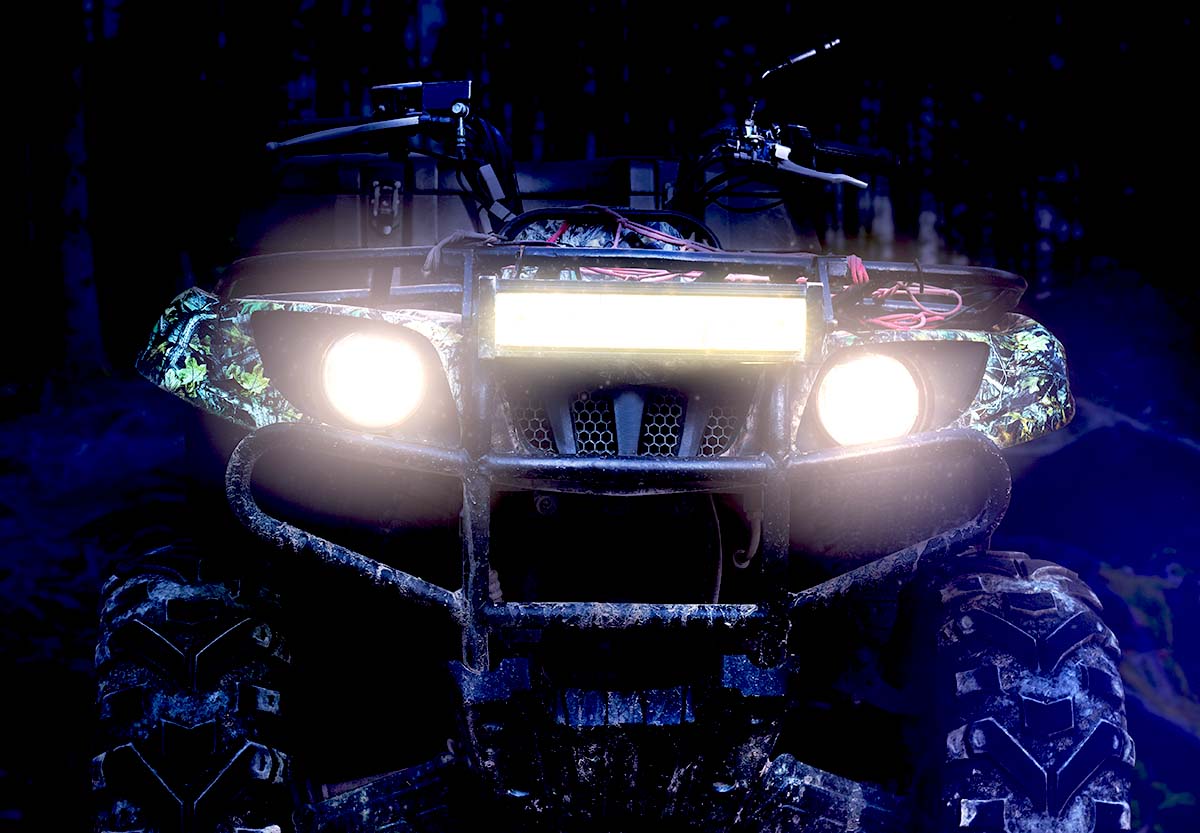LED vs HID Headlights
New headlights on your powersports vehicle are a simple upgrade. They won’t change the conditions you ride in, but brighter headlights can give you greater awareness of your surroundings.

So how do you choose between Light Emitting Diode and High Intensity Discharge lighting? The difference between the two really stems from how they create light. Before you upgrade your motorcycle, ATV or side-by-side with new lights, here’s a quick guide on the differences between LED and HID lights.
How an HID Bulb Works
An HID headlight bulb has a glass tube that’s essentially the bulb, and inside of that is a glass capsule containing a proprietary mix of salts, metal, and gas. When you turn on HID lights and electricity lasses across the material in that capsule, it creates plasma that emits light. The manufacturer can adjust the ratios and types of gasses, metals and salts in that capsule to change the brightness and color of the light.
How an LED Bulb Works
An LED headlight bulb produces light with a lot less chemistry. As the electricity is passed through the bulb, it runs across a circuit board with light-emitting diodes. At the atomic level, the electricity excites the electrons and that emits light.
LED Light Color
LED light has a bluish tint to it. To offset that blue hue, manufacturers use a yellow phosphor filter to turn that blue light to white. So by adding more phosphor to the filter, they can get a warmer glow on the light.

HID Light Color
HID color is driven by the compound inside the little glass capsule in the bulb. Even reds and greens are possible, but there’s a catch: you’ll get wide variations across different manufacturers depending on what they’ve put in the bulbs.
HID vs LED Brightness
For sheer brightness, the HID light wins. However, there have been big gains on the LED side of the industry in trying to match the brightness of HID lights. But brightness isn’t everything. When you’re off-road, where dust can reflect light back at you, a lower brightness, warmer light might work best. A brighter, whiter light might be better out on the street, where you’re a lot more likely to be riding in clear weather with good visibility.

LED and HID Beam Patterns
A lot of this part of the equation depends on how your machine is equipped. You may have a reflector headlight, with mirrors behind the bulb, or a projector-type headlight, where a chrome bowl and glass lens focuses the light.
A halogen bulb is probably what you have now, and will work on either. With a reflector headlight, you can go with either an LED or an HID light. Some specific designs work better than others, but either could work. The difference happens on the projector-type headlight.

HID bulbs are omnidirectional, so the light radiates in all directions, ready to be focused by a projection headlight to wherever the headlight housing is aimed. LED bulbs on the other hand are unidirectional, so they only shoot light where they’re pointed. In a projection style headlight, the HID will likely work, while the LED is a bit more of a hit-and-miss proposition, depending on how the light bulb pours out its light.
Additional Components
If you’re adding on HID lights, you may need a conversion kit that includes a ballast and a relay harness. The ballast revs up the electrical current to produce a spark in the bulb, and you may need a harness for some dual-beam setups. LED conversion is simple: just plug and play. The bulb can have two different diodes with two different filters and aim to give you low- and high-beam.

HID vs. LED Lights
So which one should you pick? HID offers more versatility for different headlight designs and colors, but they’re a little more difficult to convert from another type of headlight. LED lights are just plug and play, but they might not be a great fit for your headlight design, and they may not be as bright. Choose wisely.





